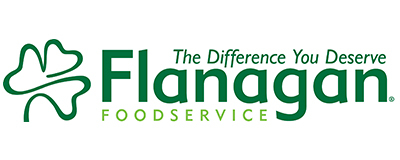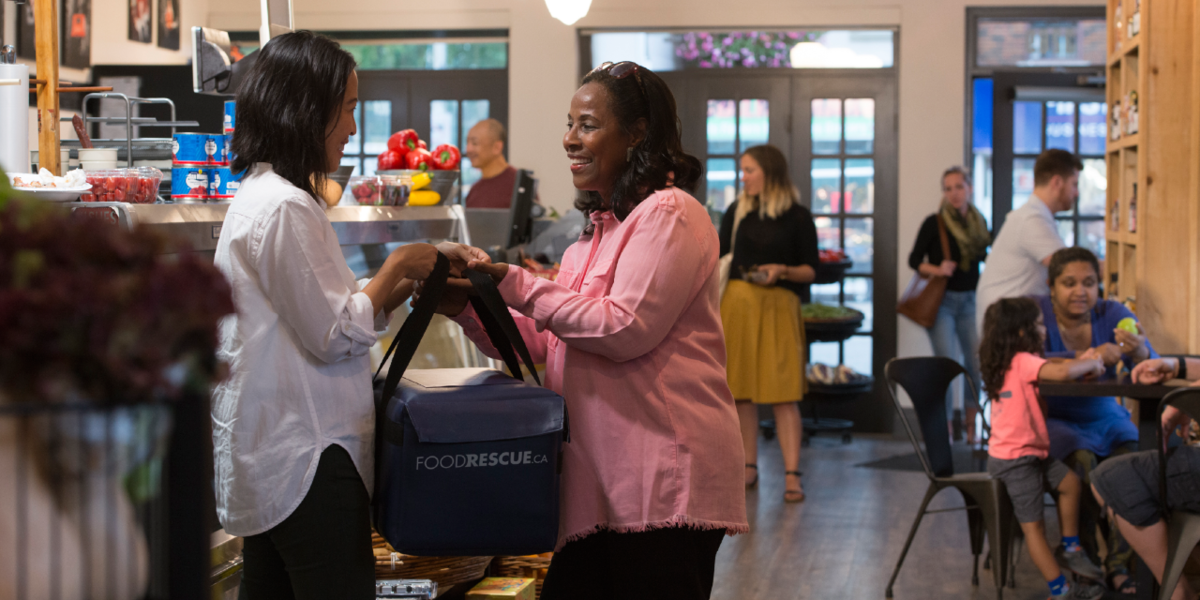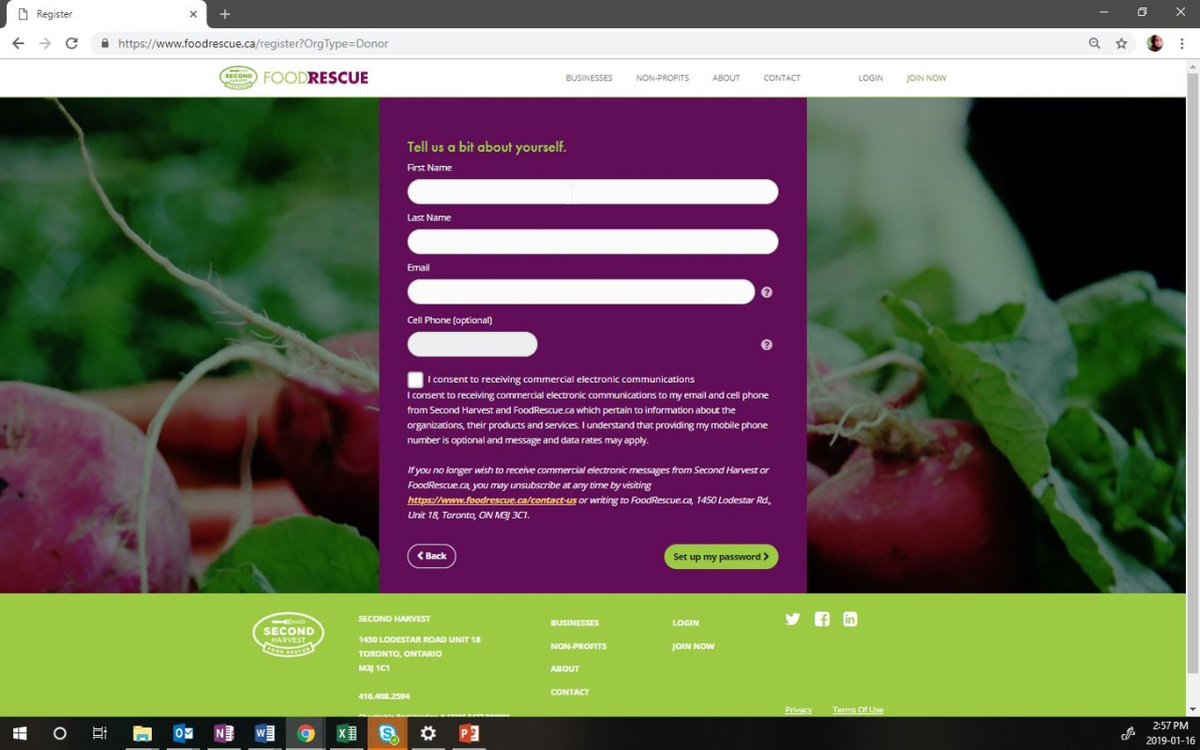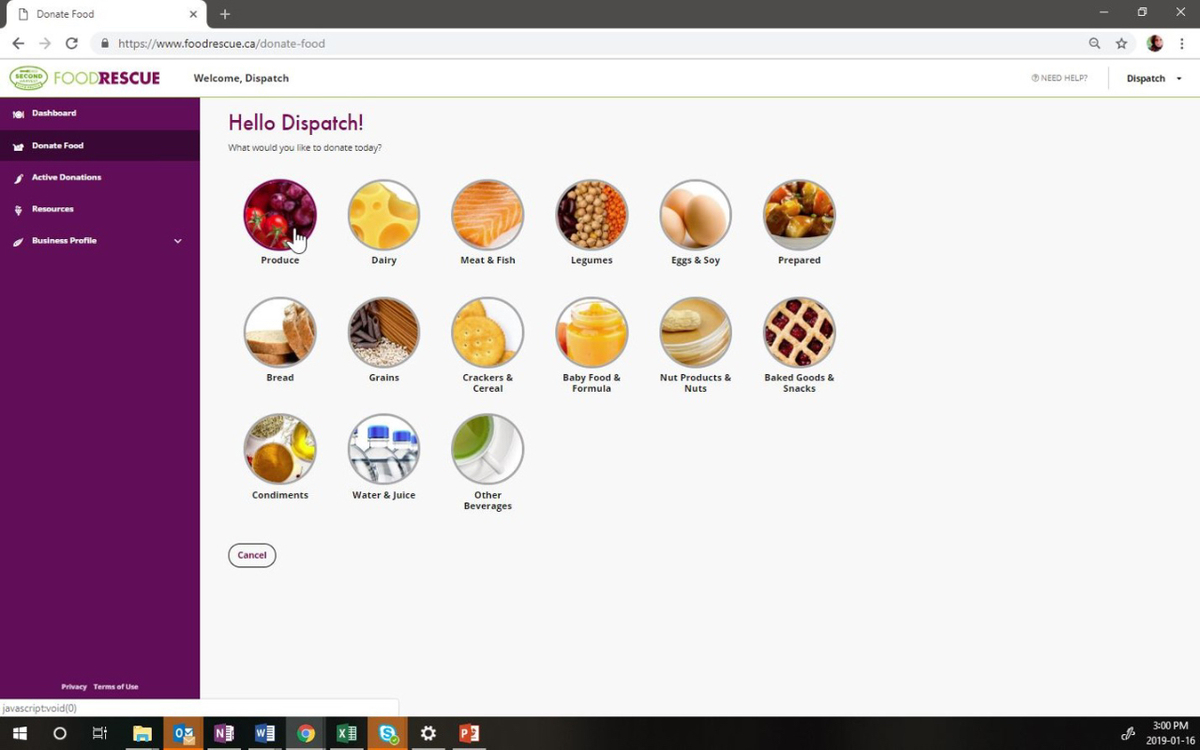
We collect basic website visitor information on this website and store it in cookies. We also utilize Google Analytics to track page view information to assist us in improving our website.

We live in a country that is rich in nutrient soil with incredible farming and safe food production practices. Still, 11 million metric tonnes of food is wasted in Canada annually. That works out to be almost 40% of all food produced in Canada. Not only does food in the landfill create methane gas—a leading cause of climate change—but 1 in 8 families in Canada currently struggles to put healthy food on the table.
Second Harvest, Canada’s largest food rescue organization, has been rescuing usable surplus food since 1985. To date, more than 140 million pounds of food has been recovered. It was Ontario’s ever-growing need to provide fresh, healthy food to hungry families that inspired Second Harvest’s innovative online platform, FoodRescue.ca.
FoodRescue.ca is a website that directly connects food businesses with surplus food to non-profits with limited funding and resources.
Veronica Summerhill, FoodRescue.ca manager, program and process development, likes to think of it as the eHarmony of food donations. “This system does the work to find partnerships, track a user’s positive impact and access additional resources for safe food handling and donations.”
FoodRescue.ca was conceived as a way to help other businesses and non-profits tap into Second Harvest’s expertise in food recovery.
“It increases access for non-profits to offer fresher, healthier types of perishable food that they often can’t afford on tight budgets,” adds Kim Couse, Second Harvest director of communications. She stresses the system is for any food business, anywhere, to safely donate any type and quantity of unsold food to any not-for-profit that provides food to those in need.
Food businesses can do so much good in their own neighbourhoods with just a few pounds of food donations a week. “We understand that restaurants work to have minimal food waste,” notes Summerhill, “but in instances where you have supplier samples that can’t be used, or maybe a catering order that doesn’t get picked up, FoodRescue.ca is a great option.”
It’s also a philanthropic story to tell. Donation metrics are tracked within the system so restaurants can easily see the number of meals provided in the community, total dollar value of their rescues, and even greenhouse gas emissions averted. Though this information is private, Summerhill says she’s seen a number of business share their positive impact with their customer base through social media.
Improving corporate social responsibility results in stronger community relationships, dedicated staff, and customer retention.
Restaurants stand to benefit from a financial standpoint, too, over-and-above reduced tipping fees. According to a study released by Champions 12.3, a global coalition to inspire action to reduce food loss and waste, restaurants see $7 profit for every $1 spent on food waste and loss reduction.
Register your free account
Go to foodrescue.ca/join-now to begin setting up your account. You’ll share basic details like your business name and contact information to get started.

Enter details of your excess food
Let Second Harvest know what it is you’re offering. You’ll select your donation type (one-time or recurring), food category, and additional details like temperature and approximate weight.

You have the choice of selecting a location you’d like to send your donation, or:
Be matched with an organization
Your donation is matched with a suitable organization in your community. That charity or non-profit will be notified of your offer.
Your food is picked up to be donated
If the organization accepts, they’ll pick up your donation at the location and time specified.
Partner organizations are provided with cooler bags, ice packs, and thermometers to ensure food safety is maintained throughout the entire chain of custody, explains Summerhill.
The Ontario Donation of Food Act protects businesses who donate food in good faith, and ensures no liability for the donor. For further peace of mind, social service organizations are screened by Second Harvest to confirm they are registered non-profits, have been Public Health inspected, and are educated regarding safe temperature-sensitive food transport.
“By providing surplus food to charity partners, food businesses are directly impacting the lives of individuals, organizations, and their community as a whole,” says Summerhill. “Community organizations are now able to offer more food programs, or even start a meal or snack program where there wasn’t one before.”
To date there are more than 700 food businesses and almost 600 non-profits in Ontario using FoodRescue.ca. Even still, greater business participation is the number one piece of feedback from non-profit partners, according to Summerhill.
“The appetite to rescue surplus food is large!”
For more information and to create your free account, visit foodrescue.ca.

